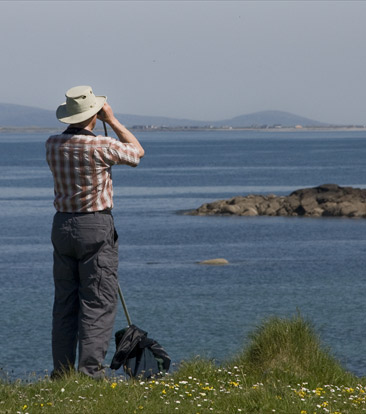 Outer Hebrides Biological Recording
Outer Hebrides Biological Recording
 Outer Hebrides Biological Recording
Outer Hebrides Biological Recording

Surveys and Wildlife Recording Projects

Documenting the biodiversity of our islands, recording our wildlife to help monitor climate change, mapping the distribution of our wildlife and encouraging everyone to engage with nature and enjoy our wonderful natural heritage are all part of the work of OHBR. We are all amateur naturalists with a wide range of interests, skills and experience. Whether you are an expert or a beginner, if you enjoy watching wildlife you can help us put our plants, animals and fungi on the map.
Anyone can take part, you don't need to be an expert and your time commitment can be as much as suits you - you don’t need special skills or training as we will provide you with all the information you need to participate. If you would like to get involved in wildlife recording but are not to sure where to start, why not look at some of our projects.
Discover more about recording wildlife
STOP - LOOK - LISTEN
Hebridean Springs are notoriously fickle, so we are using nature to help us track the arrival of spring through the islands from year to year.
This is an easy and fun project - the perfect introduction to wildlife recording
Find out more
Our records show that the six-spot-burnet is widely distributed in the southern islands, but apparently scarce further north. The cinnabar is a more recent arrival and appears to have become established in the lower region of South Uist. This project aims to try to confirm or otherwise that the absence of records from Harris and Lewis is “real” and not just a consequence of fewer active recorders in the north.
The survey in 2024 was affected by the poor summer weather, therefore we have decided to run the survey for another year and hope for better weather.
Find out more
This survey was very popular in 2024 and produced some valuable information. However, there are still some gaps on the distribution maps, so we are extending the project for another year. Recording the larvae of moths is a good way of mapping the diversity and distribution of moths in areas where there are very few moth traps in operation and for species which are not attracted to light.
It is an fun and accessible way to begin to learn about moths and whther you are just in your garden or out and about in the wider countryside.
Find out moreThere is a long tradition of amateur naturalists who have been recognised as experts in the identification, taxonomy and ecology of one or more groups of animals and/or plants. This tradition is continued by a number of biological recorders with a recognised knowledge of certain taxa.
Microscopic freshwater algae are widely under-recorded, but in the Outer Hebrides a dedicated recorder has made a significant contribution to the knowledge and understanding of freshwater habitats and the algae they support'
The survey began in 2018 with the intention to compile a biodiversity baseline for freshwater algae, concentrating on the single celled, microscopic algae known as desmids. Over the past 6 years we have collected water samples from over 200 sites from a wide range of habitats. So far, 3 new species have been described, and a considerable number of new taxa (species and varieties) have been added to the UK species index. The Outer Hebrides Algae website illustrates over 650 taxa and the Outer Hebrides Biological recording database holds over 6,700 biological records, which are available on the NBN Atlas.
Freshwater Algae ProjectFor the last 12 years we have have been surveying the islands' wildlife to discover what species of animals, plants and fungi are present and mapping their distribution. This general survey work will continue, targeting some of the less well known species and by visiting the more remote and inaccessible parts of the islands.
We can also learn a great deal about our communities of animals and plants by focusing on smaller, more local areas and recording on a more regular basis. We would like more people to participate in our wildlife projects and we are running two surveys, Garden Watch and My Patch, to enable you to tell us about the wildlife you see in your garden, on your croft, when out walking or beachcombing. Wildldlife recording is not just for experts or specialists, everyone can take part and help us learn more about our natural heritage and preserve our biodiversity.
Give it a try - you can make a difference
Garden Watch My Patch